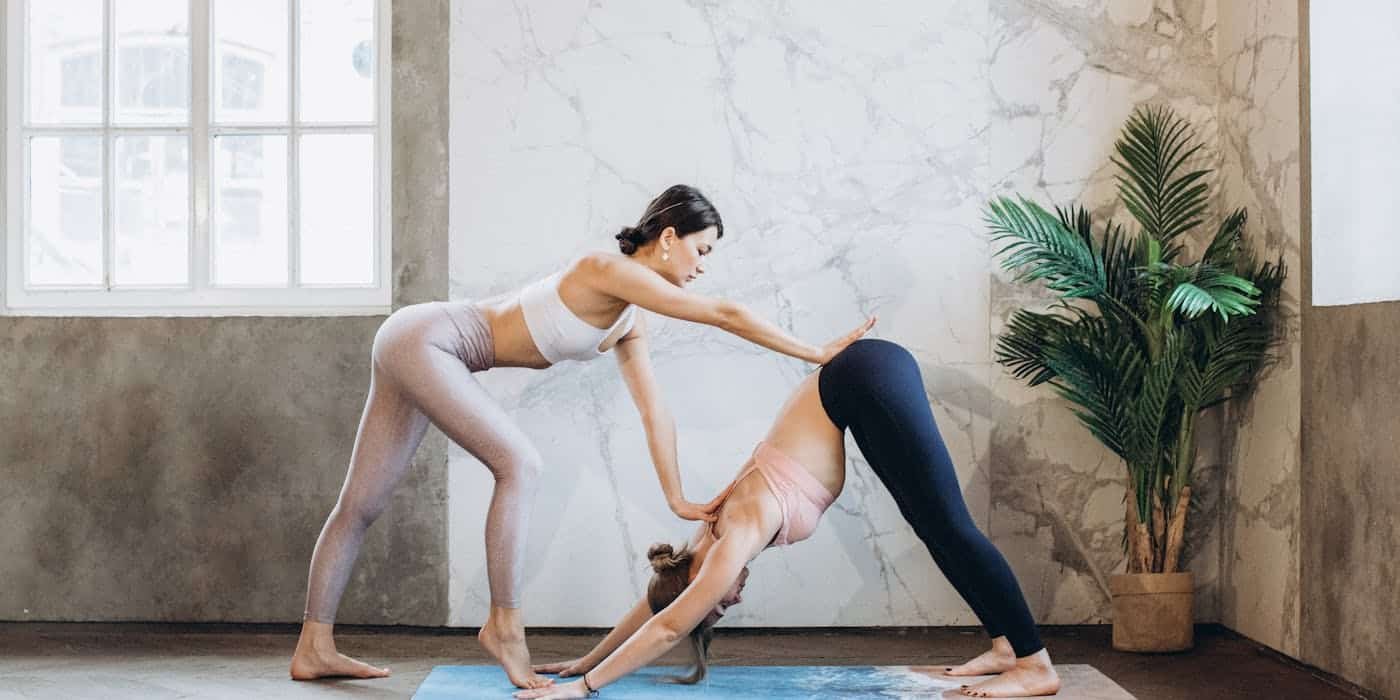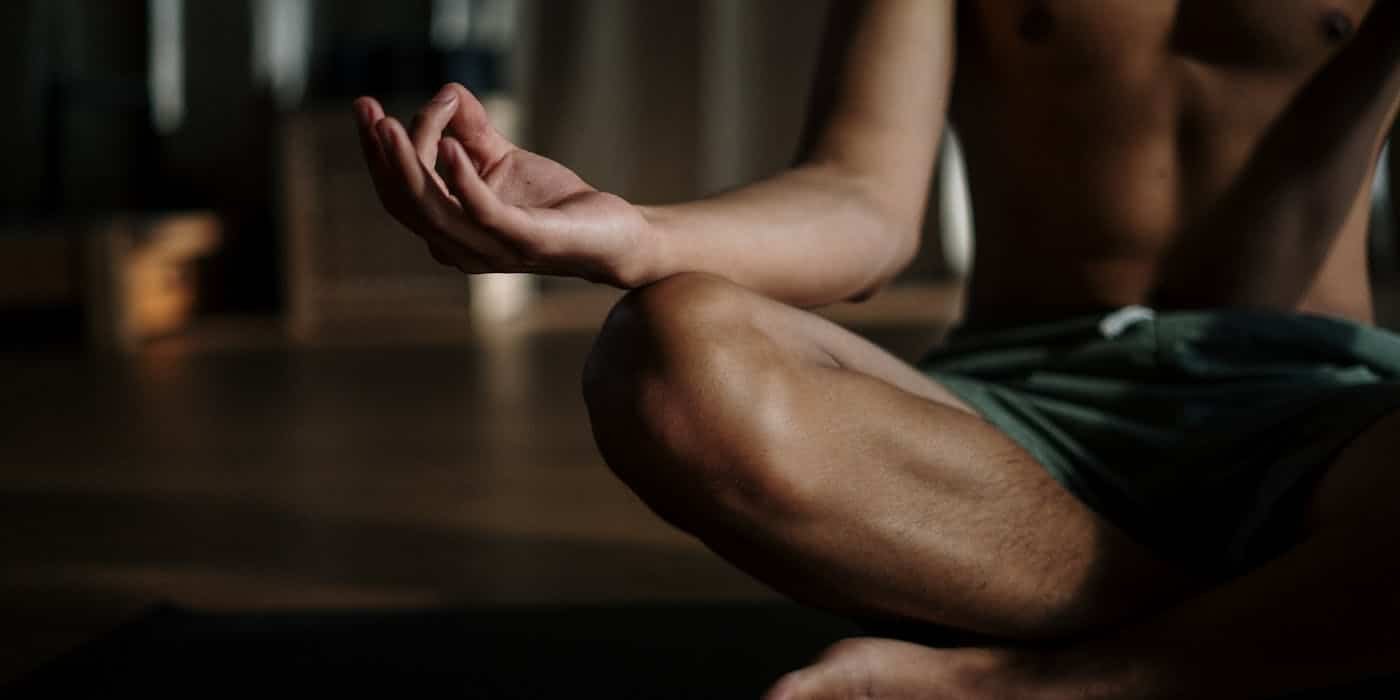Yoga is an excellent way for beginners to improve their overall flexibility. The structured postures and flow of yoga help stretch and strengthen muscles throughout the entire body in a safe and controlled manner.
[ez-toc]
Building flexibility through yoga takes time and consistency, but the benefits go beyond the physical. Yoga helps reduce stress, improve focus, and establish the mind-body connection central to the yoga practice.
This guide will highlight 12 excellent beginner yoga poses to improve flexibility along with modifications for different fitness levels. It also compares the benefits of two common yoga styles for flexibility – Hatha and Iyengar yoga. An FAQ covers additional commonly asked questions.
Benefits of Improving Flexibility Through Yoga
Before getting into specific poses, let’s examine why flexibility matters and how it benefits beginners both on and off the yoga mat:
- Prevents Injury – Flexible muscles can move through a greater range of motion and withstand more strength-building exercises. Inflexible muscles are more prone to strains and pulls.
- Supports Posture & Mobility – Good posture alignment depends heavily on having flexible muscles that keep the back and joints stable. Flexibility allows for greater ease of movement through all planes.
- Reduces Muscle Soreness – Building strength through exercise creates microscopic tears in muscle fibres. Flexibility training, like stretching after working out, helps reduce the resulting soreness.
- Decreases Stress Levels – In yoga, conscious breathing techniques combined with various mind-calming poses help relax the body and quiet the mind’s stress signals.
- Enhances Body Awareness – Deep stretching requires awareness and connection between mind and muscle. With time, yoga enhances proprioception and coordination.
Now that the benefits are clear, let’s overview some important beginner poses for building whole-body flexibility through yoga.

12 Yoga Poses to Improve Flexibility for Beginners
It’s important to incorporate poses that stretch both the upper and lower body and provide front-to-back balance.
The 12 beginner yoga poses below offer full body flexibility training in static stretches and gentle flows:
Lower Body Yoga Poses
Lower body yoga poses specifically target the hips, hamstrings, quadriceps, and calves – notoriously tight areas for most individuals:
1. Wide-legged Forward Bend (Prasarita Padottanasana)
This pose stretches the inner thighs and hamstrings while strengthening the lower back muscles. Its wide stance helps open the hips as well.
How to Perform:
- Stand with feet 3-4 feet apart, parallel to one another
- Inhale and sweep arms out to the side, exhale and hinge forward at the hips keeping back straight
- Flex feet or keep them flat depending on stretch intensity preferred
- Hold for 5-8 slow deep breaths
- Slowly rise back up engaging the core on an inhale
2. Low Lunge Variation (Anjaneyasana)
Excellent for opening the hip flexors, developing ankle mobility, and gently stretching calves and thigh muscles.
How to Perform:
- From down dog pose, step right foot forward lightly sinking knee over ankle (option to place knee down on ground or towel if ankle mobility limited)
- Inhale to lift chest, keeping shoulders pressed down away from ears
- Gently tilt tailbone up to feel deep stretch radiating down front of left thigh
- Hold for 6-8 slow deep breaths
- Repeat on the other side stepping left foot forward
3. Child’s Pose (Balasana)
A resting pose that stretches hips, thighs, and ankles. Also gently compresses the lower back muscles.
How to Perform:
- Kneel on the ground and sit back over heels, lowering chest gently towards the floor
- Reach arms forward fully extending to maximize shoulder stretch
- Hold for 8-10 slow deep breaths
- Focus on breathing deeply into the back of your body
4. Downward Facing Dog (Adho Mukha Svanasana)
Full body intense stretch that targets the calves, hamstrings, and hips while engaging all major muscle groups.
How to Perform:
- Start on all fours with hands under shoulders, knees under hips
- Curl toes into the floor and straighten legs inhaling to lift knees and tailbone towards the ceiling
- Allow the head to be relaxed down, chest facing thighs
- Push through heels rather than toes, straightening legs as flexibility allows
- Hold for 6-8 slow deep breaths (imagine pressing sit bones reaching back)
- Return to all fours and repeat 2-3 times lowering to knees or child’s pose as needed between flows
5. Seated Wide Angle Forward Bend (Upavistha Konasana)
Opens the hips and inner thighs while stretching the hamstrings and lower back muscles.
How to Perform:
- Sit on a mat with legs stretched out together straight, flexing feet
- Inhale to sit tall, then exhale bend at your hips opening your legs wide into a ‘V’ shape
- Walk hands out in front staying long through spine, lowering chest gently towards floor between legs
- Hold stretch for 6-8 slow deep breaths
- Rise back up with core engaged and repeat stretch reaching farther forward if possible
Upper Body Yoga Poses
The upper body yoga poses below counteract tight chest, shoulders, and backs from too much desk sitting and device usage:
6. Low Crescent Lunge Twist (Anjaneyasana)
Challenging twist for improving external shoulder rotation and opening the chest muscles.
How to Perform:
- Start in a low lunge with right foot forward, left knee on the ground
- Place right hand lightly behind right hip or on hip crease
- Inhale to lift chest tall, exhale twist chest left pressing right shoulder back
- Option to lift left arm skyward or wrap left arm around right thigh quad
- Gaze left twisting as deep into posture as flexibility allows
- Hold for 6 slow deep breaths then repeat on the second side
7. Cobra Pose (Bhujangasana)
Full front body stretch engages the abdominals while opening shoulders, chest, and hips.
How to Perform:
- Lie on your belly touching the tops of your feet to the floor with arms bent back towards hips, palms facing up
- Engage every muscle strongly to lift the head, chest, and thighs off the floor lengthening through the crown of the head
- Pull shoulders down away from the ears keeping the neck neutral
- Hold for 5-8 slow deep breaths focusing on lifting the chest forward and up staying strong through the back body
- Release back to the floor and repeat 2-3 times
8. Extended Puppy Dog (Uttana Shishosana)
Gentle chest opener that engages back muscles and stretches hips.
How to Perform:
- Start on all fours with knees under hips, hands slightly forward of shoulders
- Walk hands out as you gently press your hips back towards your heels until a deep stretch is felt in the chest and shoulders
- Allow the head to relax down, pressing the chest lightly toward the floor
- If too intense, walk your hands slightly forward to alleviate
- Hold for 8-10 slow deep breaths
9. Thread the Needle (Parsva Balasana)
Great twisting stretch to release tension across shoulders while gently opening the hips.
How to Perform:
- From all fours lift right arm skyward keeping shoulders squared to the floor
- Exhale guide right hand through to left shifting weight into left hip and through left hand/knee
- Sink right shoulder towards the mat with right fingertips pressing down to deepen the stretch
- Hold for 6-8 slow deep breaths
- Push through left hand to come back centre, and repeat the stretch on the left side
Seated/Neutral Body Poses
This last essential pose category for beginner flexibility includes gentle seated and lying postures that provide stabilization and recovery:
10. Bound Angle Pose (Baddha Konasana)
Inner thigh stretch that opens the hips and groin muscles promoting healthy hips and lower back.
How to Perform:
- Sit on a mat with legs straight out together
- Bend knees allowing feet to fall open to the side into a diamond shape, bringing feet in towards pelvis
- Sit tall on inhale, exhale fold torso gently over feet with a straight spine
- Option to stay here or walk hands forward if hamstrings are flexible
- Hold for 6-8 slow deep breaths
- If intense discomfort in the knees, place a block or rolled blanket underneath each thigh
11. Reclined Bound Angle (Supta Baddha Konasana)
A restorative version of the seated posture with support of the floor to relax fully into hip and groin stretch.
How to Perform:
- From the bound angle pose, carefully lower back down onto the floor staying in a diamond shape with knees open and feet together
- Allow knees to fall open towards the floor, keeping soles of feet connected
- Option to place bolsters, pillows, or blankets underneath knees for additional support
- Place arms down by sides with palms up and relax body fully
- Hold for 5-8 minutes focusing on deep breaths
12. Savasana (Corpse Pose)
A pose of total relaxation in which all muscles are rested while quieting the mind.
How to Perform:
- Lie flat on your back with legs gently outstretched and arms resting at the sides, palms facing up
- Allow feet to fall open to each side like book pages opening
- Close your eyes, and relax your body fully by softening every muscle starting with the feet and moving upwards
- Hold for 5-10 minutes focusing on calming, full-body rest
Savasana appropriately ends all yoga practices allowing the body to integrate benefits before slowly easing back to activity.
Both styles greatly improve flexibility, but Iyengar focuses more on precise anatomical alignment utilizing props. Hatha is better suited for healthy individuals wanting a more vigorous practice focused on asanas.
Now that we’ve covered excellent beginner poses for flexibility across major muscle groups along with popular styles, let’s address some frequently asked questions.

FAQ: Building Flexibility Through Yoga
Q1: How long before I see flexibility results?
Consistency is key, but subtle improvement can be felt in as little as 3-4 weeks. To progress towards intermediate or advanced flexibility levels expect to practice at least 1-2 years. Creating a manageable routine that allows muscles time to gently stretch and strengthen without strain is crucial.
Q2: Will yoga help specifically with my tight hips or hamstrings?
Yes! Yoga conditions the body holistically but provides deep stretching action on notoriously tight areas like hips and hamstrings. By incorporating targeted poses into routines, tightness strength and stability benefits will decrease. Just progress slowly out of poses at any sensation of strain.
Q3: I’m not flexible at all – can I still practice yoga effectively?
Absolutely yes for beginners at any level of flexibility or mobility. There are prop modifications using blocks, straps, and bolsters to accommodate a limited range of motion. Choose gentler styles of yoga focused on relaxation and move through poses at your own pace. With regular practice, flexibility will gradually improve alongside other mind-body benefits.
Q4: What should I do before and after yoga practice for flexibility benefits?
It’s ideal to warm up muscles with light aerobic activity like walking to prepare for practice. This increases blood flow and range of motion to prevent injury. After yoga gently stretch any particularly tight areas holding each stretch for 60 seconds. Light foam rolling or using a massage ball can also help muscles release further post-practice. Stay hydrated before and after as well.
Conclusion
Yoga provides whole-body conditioning like no other exercise when practised safely and consistently over time. Work towards your full range of flexibility potential by incorporating foundational poses for beginners covered here into a manageable routine. Support those with props as needed, move slowly in and out of stretches, and work diligently for 1-2 years to see flexibility transform.
Beyond the dramatic range of motion improvement, you’ll likely notice better posture and mobility, decreased stress, and an overall sense of balance from a regular yoga practice. Stay patient through daily effort and you’ll feel and move better than you knew possible!

